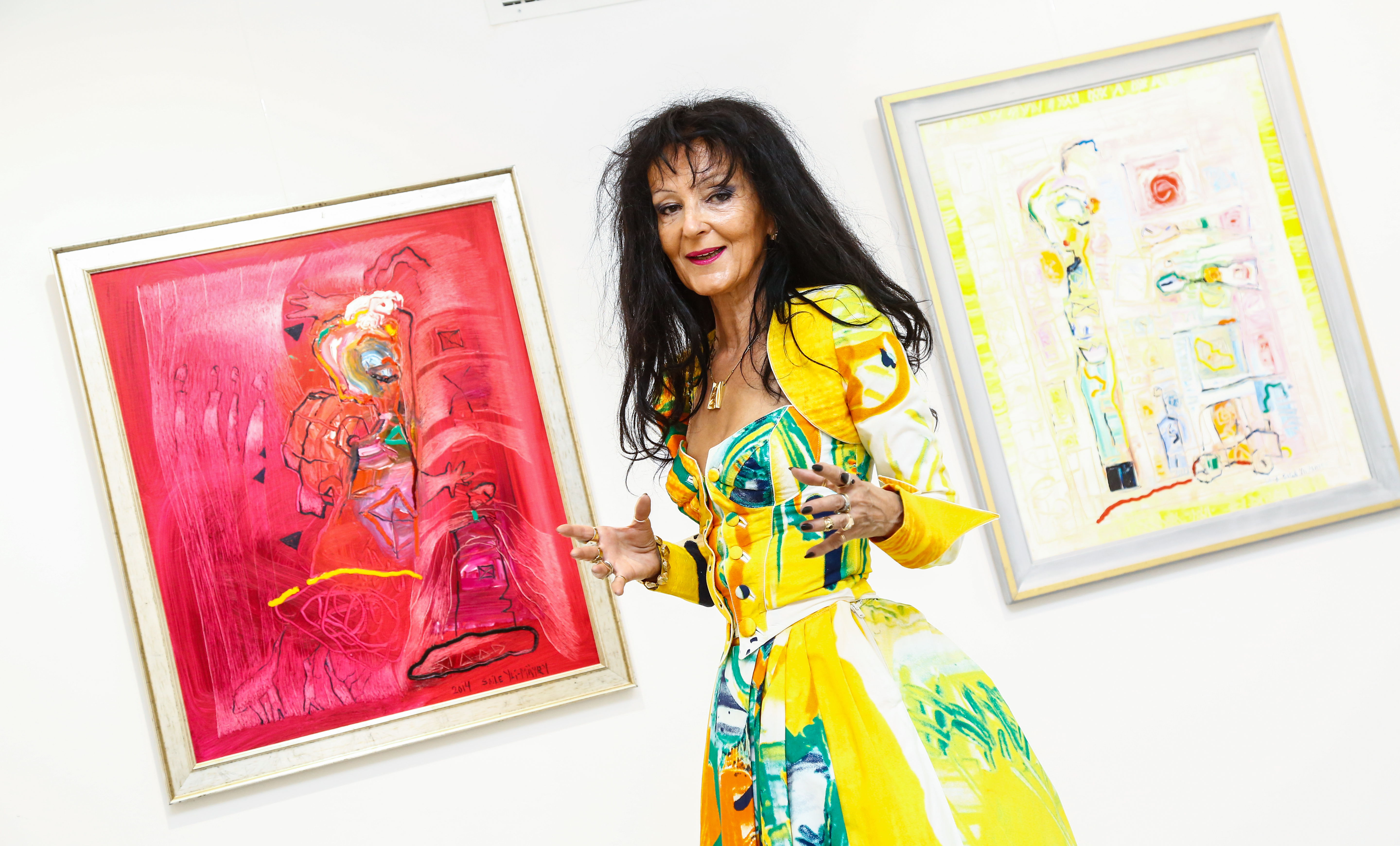
There she was amid her art at Stal Gallery dressed in a spectacular hand-printed gown that made it seem as if she had walked out of one of her paintings, taking with her its flaming colours and striking imagery. Soile Yli-Mäyry’s contemporary Tudor-style gown was splashed with bright sunflower yellow and distinguished by indecipherable black markings as are her paintings. Her impossibly tiny waist and the ballooning lines of the fluted skirt turned Soile and her gown-painting into a living sculpture.
All around Soile were blasts of colour on canvas. Colour is one of the hallmarks of Soile Yli-Mäyry’s art. She sees primary colours (red, green, blue, yellow) in their jewelled essence – ruby, emerald, sapphire, and the yellow sun. On her canvases, Soile releases each colour into its inner spectrum of bright hues. Ruby is a rainbow with shades of crimson, scarlet, deep pink, and light burgundy. Emerald comes in radiant waves of lagoon green, freshly risen grass, and subtle apple hues. Sapphire is expressed in optimistic shades of blue – the colour of the sky in spring, robin’s-egg turquoise, aquamarine, and deep, rolling cerulean blue from the waters of the South Pacific. Yellow emerges from the sun-drenched earth as daffodils do, and as golden-orange flames rise from fires in the darkness of night. But colour, no matter how dramatically expressed, is nothing without form and implication. Soile’s brilliant sense of design and expressive symbolism take colour into another dimension.
The existential theme that guides the work of this artist is the alienation of the human being from nature in the modern urban context where more than half the global population exists. The percentage is much higher in developed countries such as in Finland, Soile’s home country, where eighty-five per cent of the population lives in cities. Titles of Soile Yli-Mäyry’s paintings, such as Burning Concrete and Asphalt Dreams illuminate this vital theme.
Solitary figures of human beings, sometimes depicted up-side-down or sideways are sketched in a primitive style that suggests not only the drawings of children, but also those painted in caves many thousands of years ago, as she brings the ancient past to bear upon the present. These figures and similar ones of animals and birds are squeezed into elongated forms by compositional forces of colour and texture. As I studied a panorama of Soile’s paintings in a book on her art, Climate of the Soul by the renowned British art critic, Edward Lucie-Smith, it was with pleasure that I began to see Soile in some of the figures – the upward slant of an eye, a quizzical mouth, a line of trailing hair. Hidden self-portraits.
Soile works exclusively with a palette knife, innovatively using the sharp end as well as the flat blade. Hours and hours are spent crafting eloquent textures and the finest of fine white lines — with symphonic results. Literally millions of white lines seem to form a thin, translucent sheet of water flowing almost musically over some of the canvasses. In a contrasting technique, paint is carefully sculpted into forms in bas-relief, often representing the head of a person. The artist’s ingenuity is such that each painting is a world unto itself. This exciting and sumptuous exhibition also includes small totemic sculptures in richly coloured Murano glass.
Over the past three decades, Soile Yli-Mäyry has exhibited in some 30 countries with more than 300 solo exhibitions in the Americas, Asia and Europe. And in Finland, Soile’s homeland, there is a beautiful Museum bearing her name and dedicated to her art. The exhibition, titled Asphalt Light, continues until April 1st 2016 at Stal Gallery, located at Villa 221, Al Inshirah Street in Madinat Qaboos.